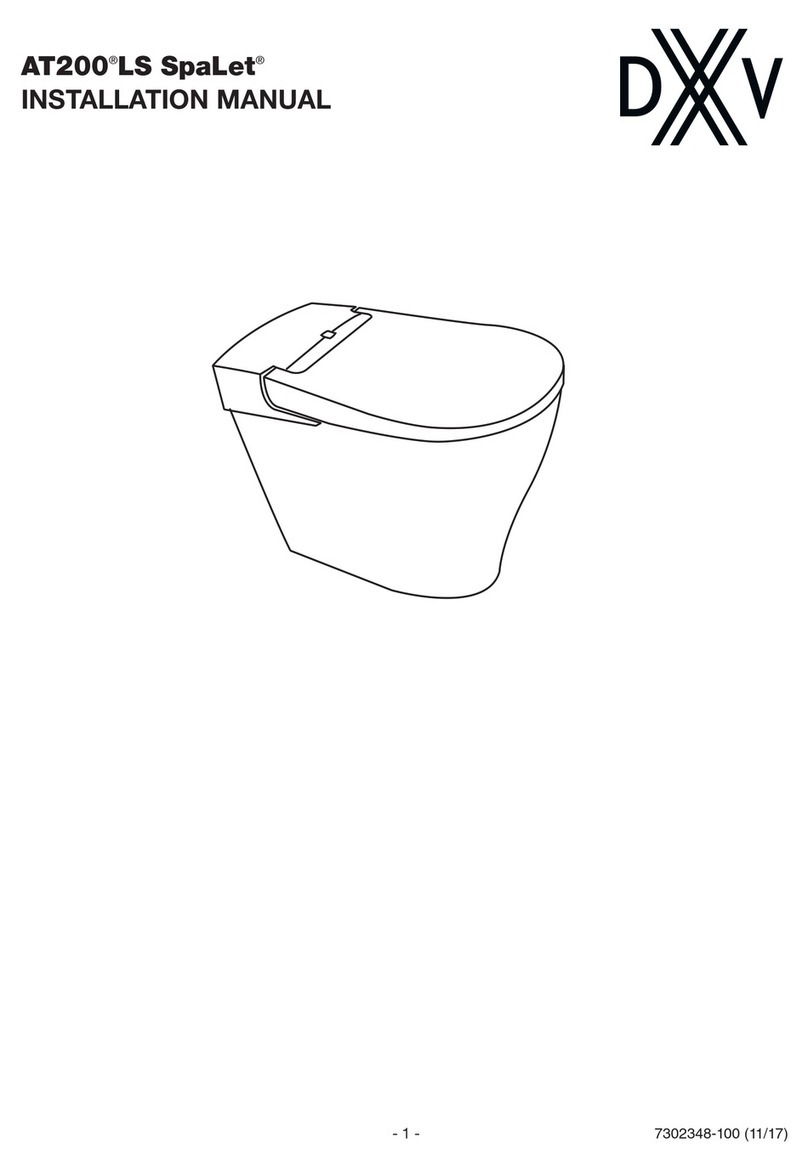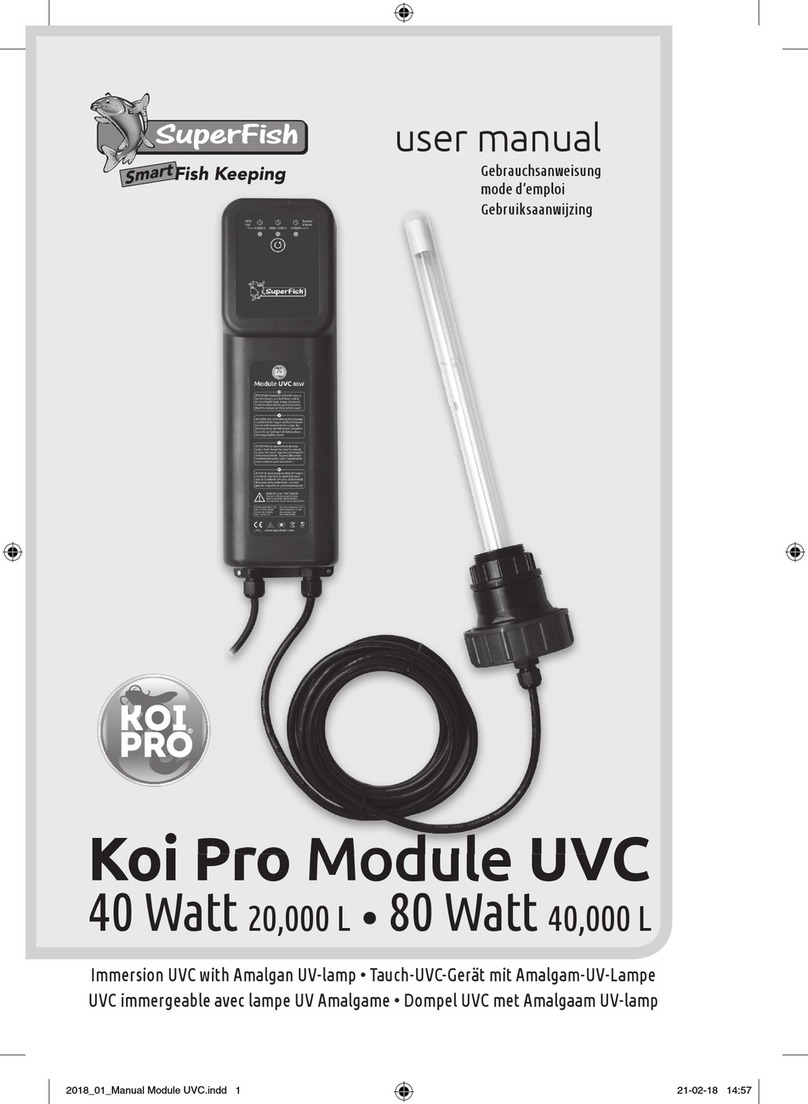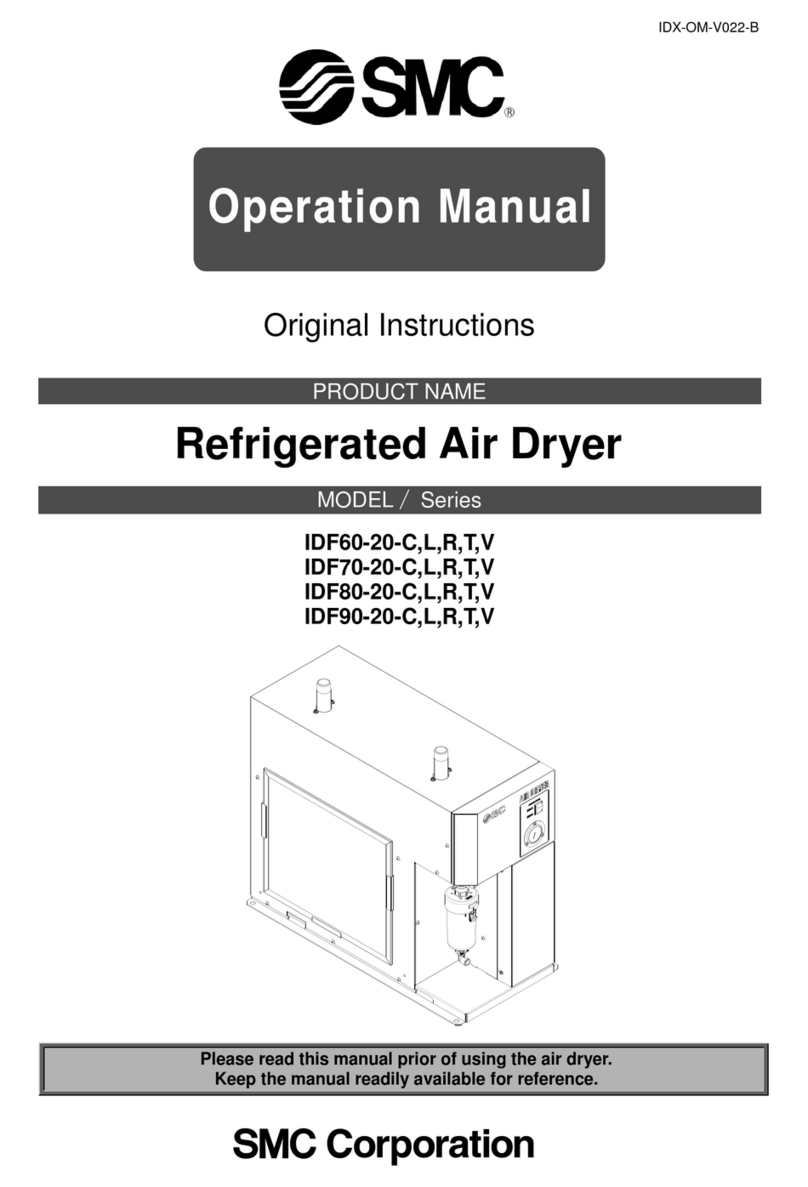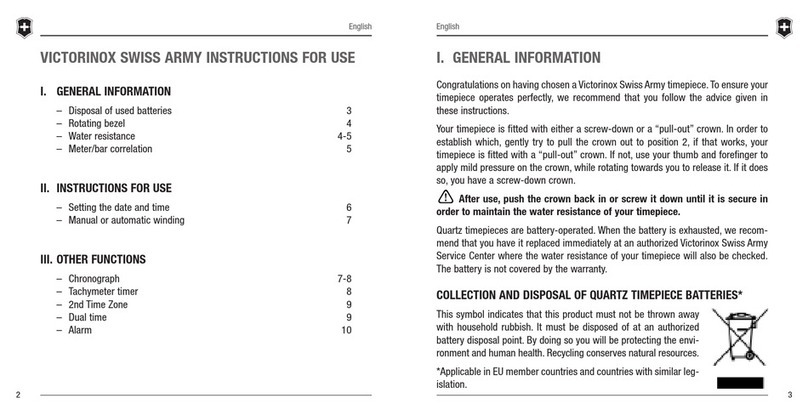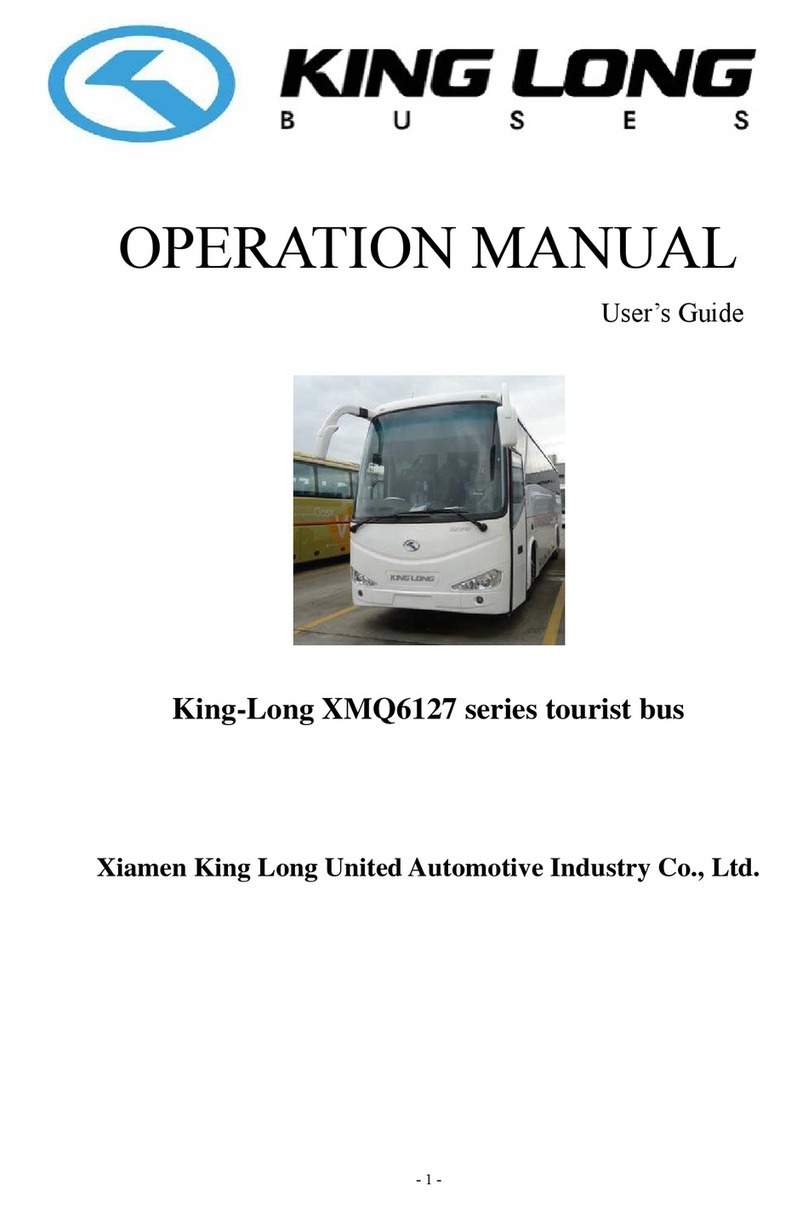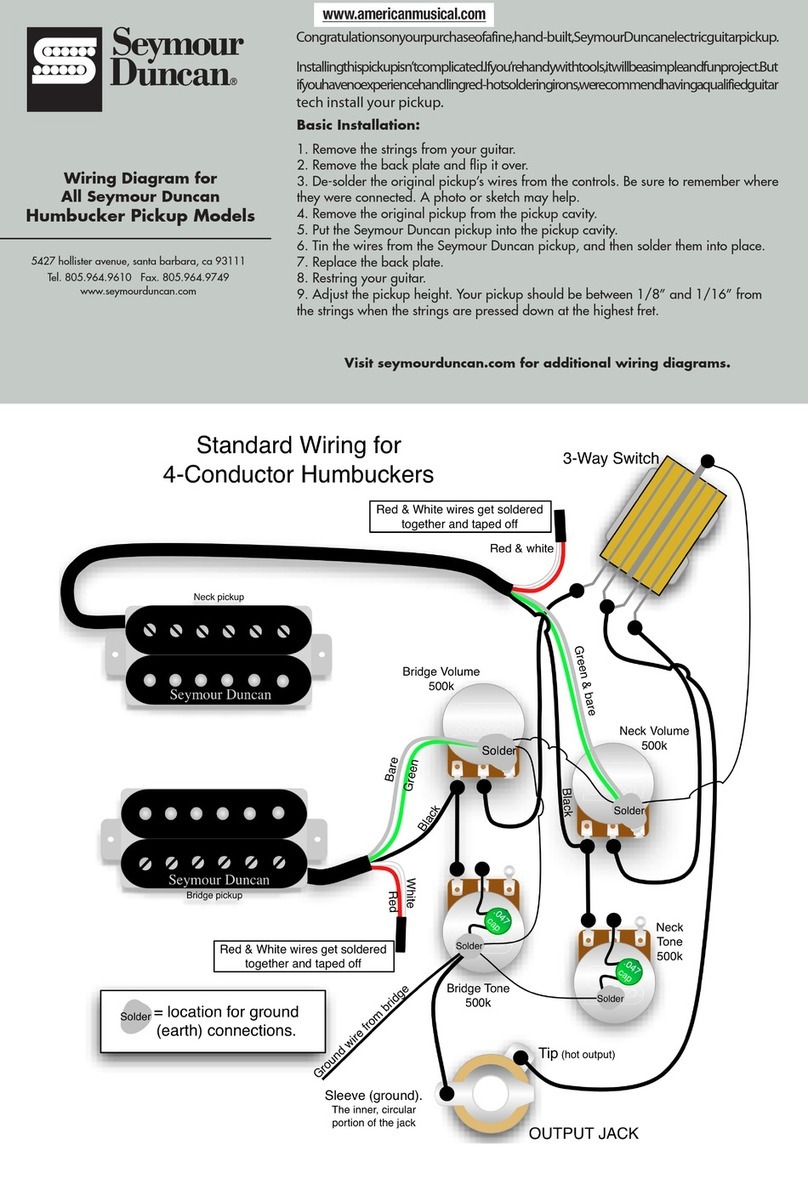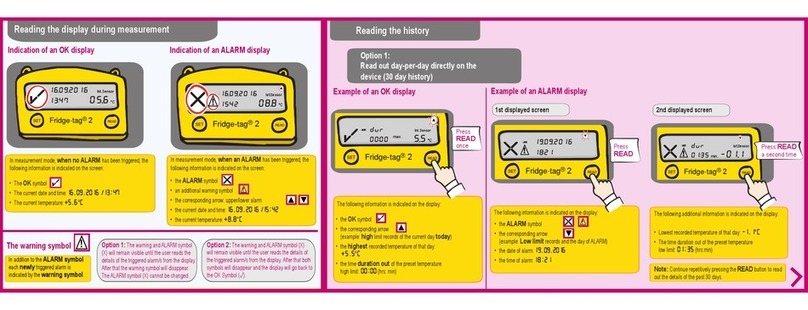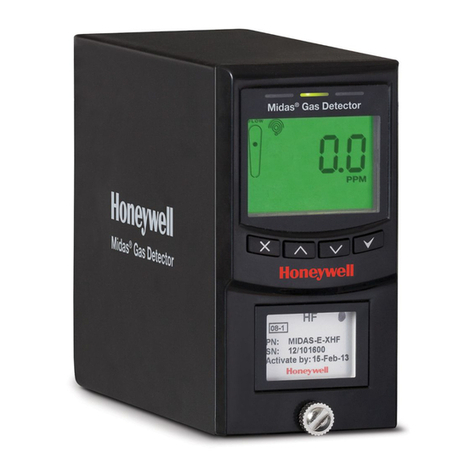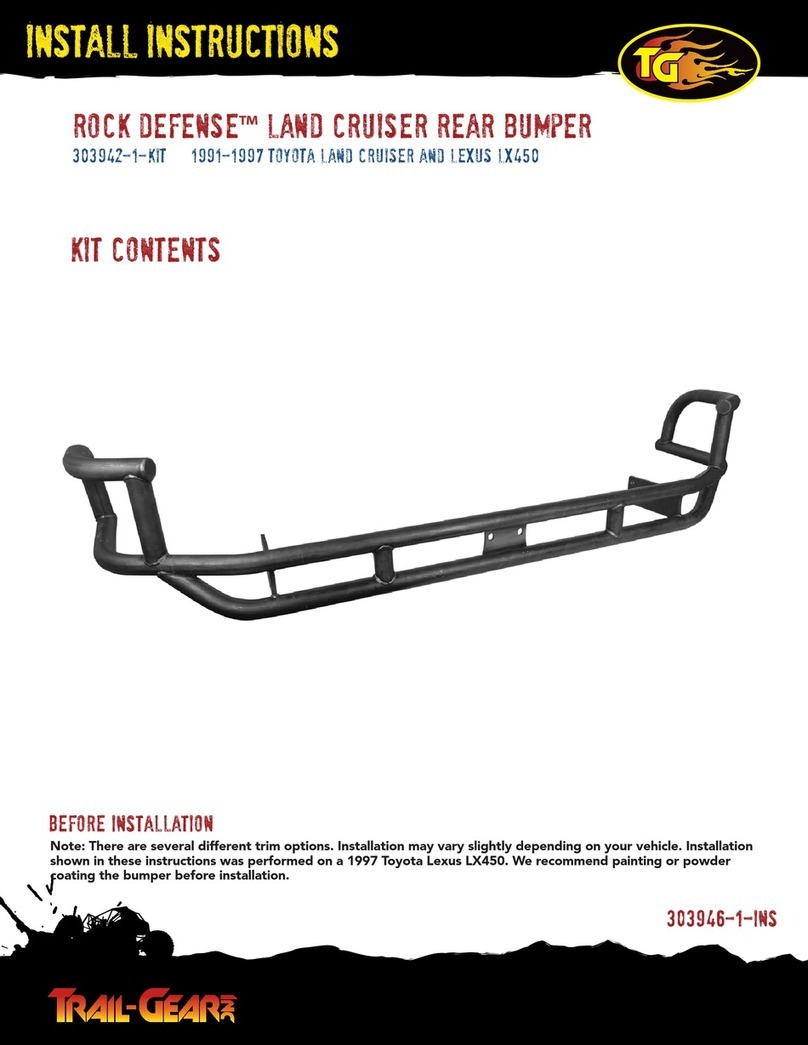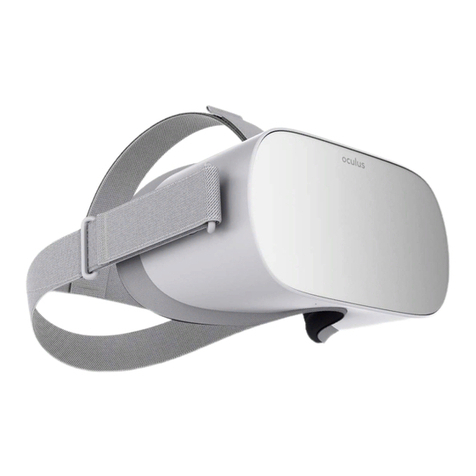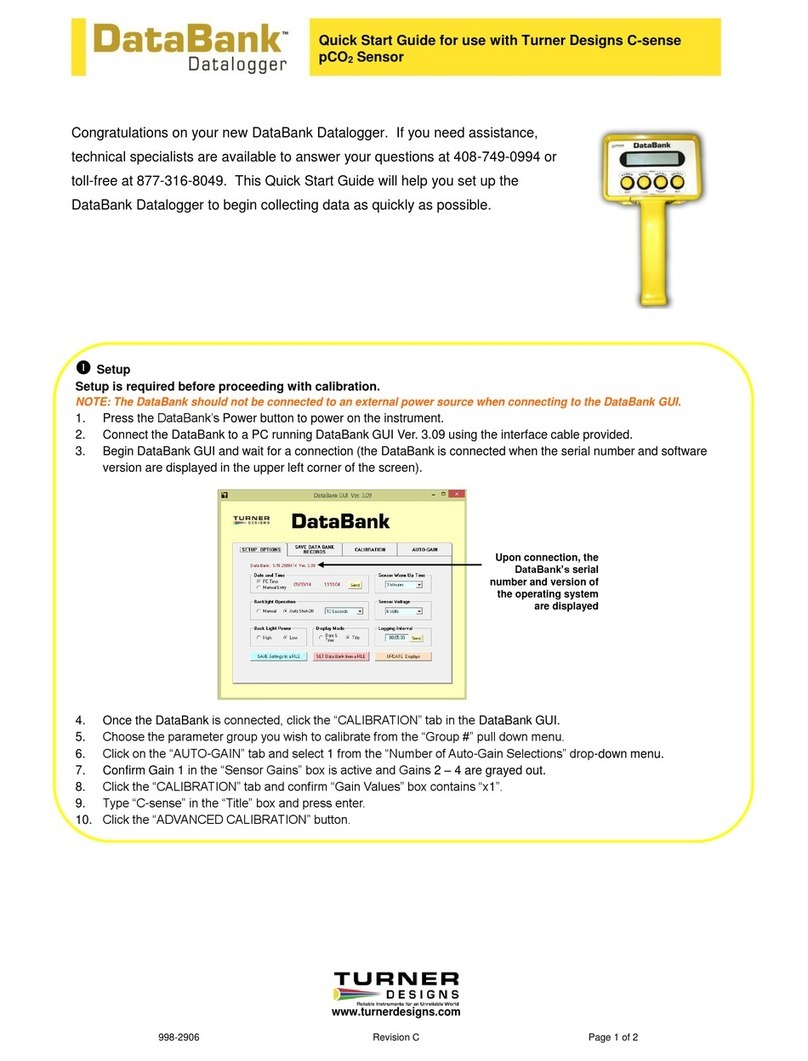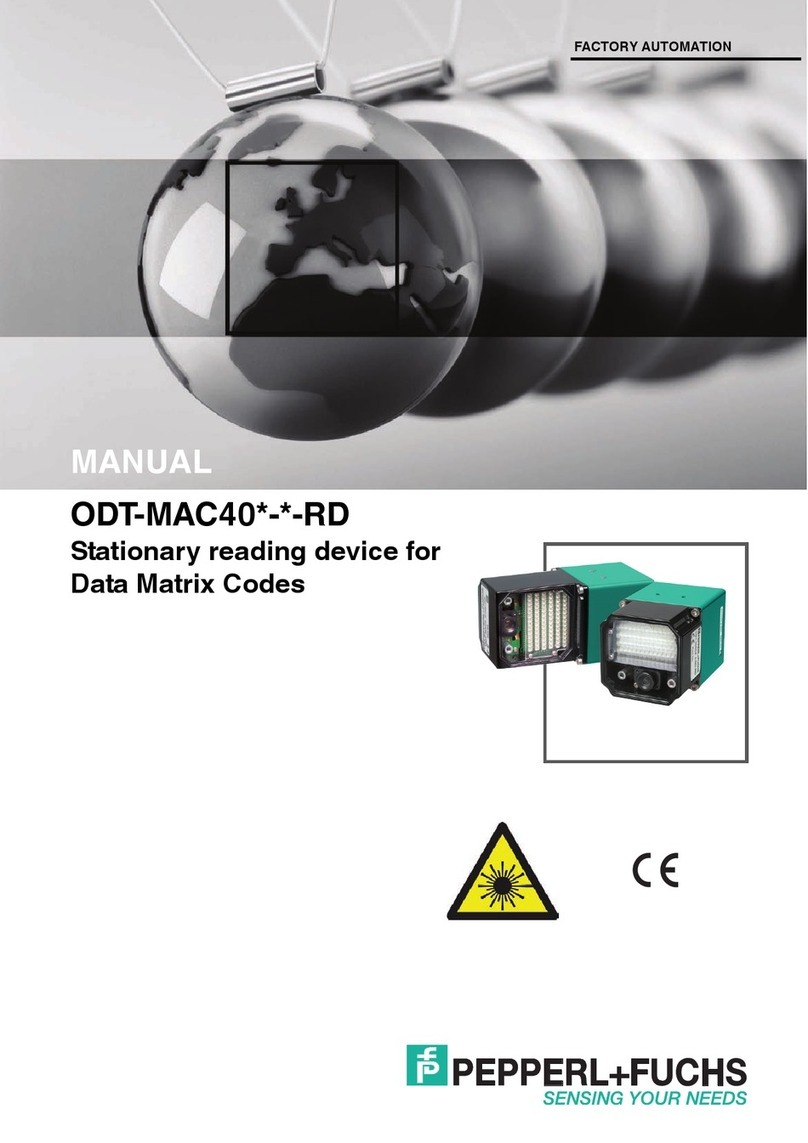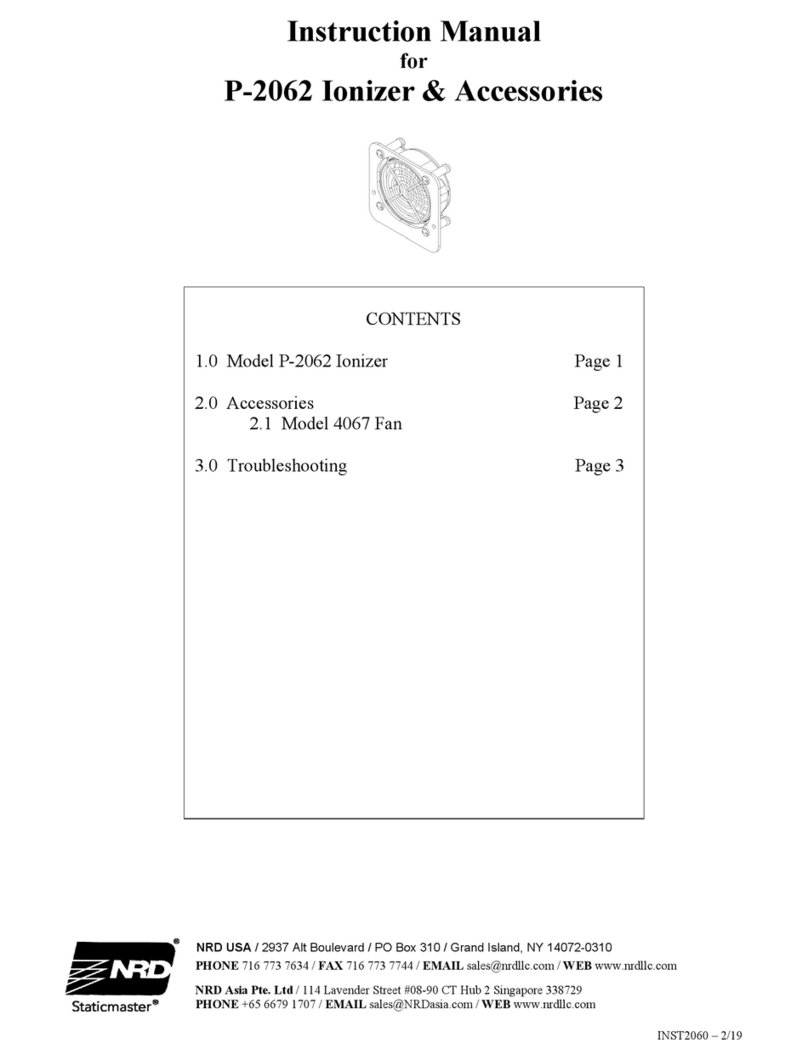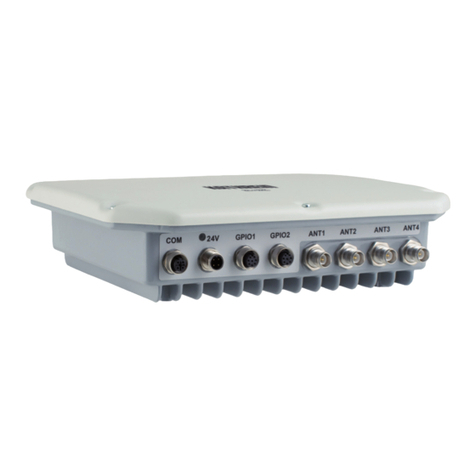GR GR4000 User manual

Mod. IO 09/I Rev. 01
AUTOMATIC BARRIER
GR4000 – 6000
USER MANUAL
Congratulations on your excellent choice. Your new
electromechanical gear motor is manufactured in compliance with
high levels of quality and reliability; this will guarantee performance
and safety over time.
Enclosed with this booklet, you will find all the information necessary
for assembling your gear motor and ensuring your safety.
THERE IS NO REPLACEMENT FOR CAUTION IN ANY CASE AND
THERE IS NO BETTER RULE IN ORDER TO PREVENT
ACCIDENTS.
All our products are manufactured in compliance with standards in
force.
This instruction booklet is exclusively designed for
professional installers who are experts in the manufacturing criteria
and the safety and protection devices against accidents for gates,
doors and power operated gates (respect standards and laws in
force).
The installer must provide suitable explanations and issue the
final user with an instruction booklet in accordance with EN 12635.
Before proceeding with installation, the installer must analyse
the risks of final automated closing and ensure that the whole system
is in safe conditions (in compliance with the EN 12453 and EN 12445
standards).
The various electrical components which make up the
automated closing system (e.g. photocells, flashing lights etc.) must
be wired in compliance with EN 60204-1 and the modifications to this
in point 5.2.2 of EN 12453.
Any operation to repair or adjust the equipment is forbidden
unless all due precautions in order to prevent possible accidents have
been taken (e.g. electrical power disconnected, motor blocked). All
moving components must be equipped with suitable protection
devices.
The power line must be protected for the maximum current
when the rotor is blocked.
All repair operations must be performed by qualified personnel.
Keep the automatism commands out of the reach of children.
The commands must be installed at a minimum height of 1.5 m from
the ground and out of the radius of action of moving parts.
Only activate the remote control when the automatism is
visible. All command operations must only be carried out at points
where the automation is completely visible.
Any arbitrary modification to this product releases GR Sistemi
Automatici di Apertura Srl from all responsibility resulting from
damage or injury to objects, persons or animals.
Disregarding the safety standards listed herein and the
regulations in force releases GR Sistemi Automatici di Apertura Srl
from all responsibility resulting from damage or injury to objects,
persons or animals.
Keep this manual safely in a suitable place known to all
persons involved.
The automation must be coupled with a control unit equipped
with torque adjustment which provides an intrinsic crush-prevention
safety device as referred to in the EN 12453 – EN 12445 standards.
Only activate the remote control when the automatism is
visible. All command operations must only be carried out at
points where the automation is completely visible.
Any arbitrary modification to this product releases GR
Sistemi Automatici di Apertura Srl from all responsibility resulting
from damage or injury to objects, persons or animals.
Disregarding the safety standards listed herein and the
regulations in force releases GR Sistemi Automatici di Apertura
Srl from all responsibility resulting from damage or injury to
objects, persons or animals.
Keep this manual safely in a suitable place known to all
persons involved.
The automation must be coupled with a control unit
equipped with torque adjustment which provides an intrinsic
crush prevention safety device as referred to in the EN 12453 –
EN 12445 standards.
SAFETY RULES
While installing/using the automation, follow the safety rules
listed below with great care:
Safe distance!
Moving mechanisms!
Do not install the automation in environments which
are saturated with explosive mixtures!
Electric shock!
Use gloves!
Use welding goggles!
Keep the protective cover on!
MAINTENANCE
Before every maintenance intervention, disconnect power
using the ON/OFF switch and lock it in the OFF position using a
padlock.
The equipment must be maintained in order to conserve
the conditions which guarantee safety and correct operation.
Always use original spare parts.
Do not perform interventions which modify the machine.
A modified machine requires a new CE marking.
Adjustments to the operation of the automatism must be
carried out by specialised personnel in compliance with reference
standards. During these operations, the presence of two
operators is required.

Mod. IO 09/I Rev. 01
DEMOLITION
The materials must be disposed of in
compliance with standards in force. If materials
are to be recycled, it is advisable to separate
them according to type (copper, aluminium,
plastic, electrical components etc.).
For EU countries only
Do not dispose of the GR 3000 moveable barrier and system
components as household waste! This is an explicit warning that GR
opening systems and system components must not be disposed of as
household waste nor taken to local collection centres!
In accordance with European directive 2002/96/EC regarding the
recycling of electrical equipment and its implementation in national
law, GR offers a fee-paying service for the collection and
environmentally-friendly disposal of its equipment and system
components.
DISMANTLING
To dismantle the automation in another location, proceed as follows:
1 - disconnect the power supply and the electrical system;
2 - remove the control panel and all the installation components.
If any components are damaged or are impossible to remove, replace
them.
DECLARATION OF CONFORMITY
The GR 4000 230 V moveable barrier
Complies with the conditions of the Machinery Directive 2006/42/EC –
Directive of the European Parliament and Council of 17 May 2006, on
the approximation of the laws of the Member States relating to
machinery
Complies with the conditions of the following other EC directives:
Electromagnetic Compatibility Directive 2004 /108/EC;
And also declares that the following harmonised standards have been
applied
- EN 292 1 / 2 - Safety of machinery - General principles for design
- EN 294 - Safety of machinery - Distances to prevent danger
zones being reached.
- EN 60335-1 - Safety of household and similar electrical appliances -
general requirements.
- UNI EN 12 453 - Safety in use of power operated doors -
requirements
where applicable, the technical provisions of product standards have
also been observed
- EN 12445-2000 Safety in use of power operated doors – Test
methods -
This declaration of conformity is therefore issued in accordance with
Directive 2006/42/CE as per Annex II paragraph A.
USING THE AUTOMATION - GENERAL DESCRIPTION
The GR 4000 and GR 6000 barriers are suitable for managing
passageways with average levels of transit and comply with the
UNI 12 453 standard.
- The movement of the bar is regular with gradual decelerations
at the opening and closing positions. The barrier is identified by
the CE marking plate.
- A patented intrinsic safety system prevents the barrier from
falling in the event of the breakage of any component of the
control chain, moving the barrier back to the passage open
position.
- adjusting the run between the two mechanical end runs and
balancing the barrier by preloading the movement return spring is
easy by moving the nut/counter-nut sets.
- In the event of a power cut, a simple key unblocking system
allows the automatism to be unblocked with the consequent
intervention of the return spring which moves the barrier to the
vertical position without any external help.
- The crush-prevention safety device is ensured by the
preloading of the spring which opposes the action of the
automatism which, where suitably calibrated, ensures that a force
is available for movement which guarantees that the barrier stops
upon minimal contact with an obstacle.
- The load-bearing casing is made of galvanised steel and is
powder-painted.
- Movement is ensured by an asynchronous motor in order to
guarantee high levels of reliability over time.
- Possibility to control the motor directly from an automatic
external control system.
- Adjustable mechanical end runs with bar open and bar closed
contacts available as signals for the automation system.
- Adjustable slowdown limit switch managed by the electronic
control unit.
EQUIPMENT
In order to install the automation, the following equipment is
necessary: spanners, screwdriver, ruler, spirit level, saw, drill,
welder.
PRELIMINARY CHECKS
1 - Read the instructions in the manual very carefully.
2 - Check that the electrical system complies with the
characteristics required by the gear motor.
TECHNICAL DATA GR4000 230V GR6000 230V
POWER SUPPLY (V 220AC 50/60Hz) 230 230
INPUT POWER (W) 180 350
INPUT CURRENT(A) 0.8 1.0
CAPACITATOR (µF) 8.0 12.5
OPENING TIME (sec) 4.5 8.5
CLOSING TIME (sec) 4.5 8.5
MAX. BAR LENGTH (m) 4.0 6.0
MOTOR SPEED 2800 1400
OPERATING TEMPERATURE (°C) -25 +60 -25 +60
THERMAL PROTECTION (°C) 150 150
PROTECTION RATING (IP) 40 40
WORKING CYCLE (%) / DAILY MANOEUVRES 80 / > 4000 80 / > 4000
MOVEMENT ELECTROMECHANICAL
PISTON ELECTROMECHANICAL
PISTON
UNBLOCKING MANUAL - WITH KEY MANUAL - WITH KEY
DIMENSIONS AND WEIGHT 324x282x1130mm / 44.0 kg 324x282x1130mm / 44.5 kg

Mod. IO 09/I Rev. 01
OVERALL DIMENSIONS AND POSITIONING
- The barrier movement mechanism is easily adaptable to provide
right-hand or left-hand closing (as seen from the barrier side). See
instructions for changing the opening side.
- For safe use, it is necessary to provide suitable space for the
automatism access panel opening (P) and to be able to activate the
unblocking key (CH) for the emergency manoeuvre.
- Secure to the flooring takes place using an anchoring counter
plate equipped with suitable anchor bolts to embed in the jet of
concrete.
The following table summarises the main overall barrier
dimensions:
Model Max
length
L
Hsb H c Wid.
c Depth
c
GR4000
GR6000 6000 900 1225 325 225
SAFE OPERATING CONDITIONS:
To operate the barrier:
- Affix the adhesive band with reflective strips onto the barrier arm,
to highlight it;
- Install a fixed support at the end of the barrier;
- Install a system of photocells, as shown in the figure, to prevent
the automatic re-closing system from intervening during the transit
of persons or vehicles;
- Check that, in the open and closed positions, the barrier is easily
visible both during the day and at night. Add suitable additional
lighting where necessary;
- Install a flashing light to activate during barrier movement
(optional)
ADJUSTING THE LIFTING FORCE GENERATED BY THE
SPRING
- After switching off the power supply, access the barrier
automatism through the opening in the panel (P).
- With the use of a CH32 fixed spanner, loosen the lower nut and,
by turning the stainless steel stem by hand, the following occurs:
in a clockwise direction, the length of the threaded bar increases
(the preload increases and counterbalances a longer or heavier
arm).
in an anti-clockwise direction, the length of the threaded bar
decreases (the preload decreases and counterbalances a shorter
or lighter arm).
- Once adjustment is complete, tighten the counter-nut using the
fixed spanner.
!
It is strictly forbidden to adjust the spring so
that the force to overcome to stop it is greater
than 15 kg (150N)
MODIFYING THE BARRIER CLOSING DIRECTION
(RIGHT/LEFT)
NOTE, THE CORRECT DIRECTION OF THE BARRIER IS WHEN
THE MOTOR PISTON IS EXTENDED, THE BAR IS RAISED!
The barrier is supplied with the closing as requested (right/left) (as
seen from the barrier side).
If the direction of access is to be inverted, the barrier is fully
reversible and with simple operations, it is possible to readapt it,
following the instructions below.
- Disconnect power to the barrier, lock the switch with the key and
open the hatch (P) and the head cover (C).
- Lighten the load on the spring as explained in the chapter
“Adjusting the lifting force generated by the spring”, turn the
stainless steel stem until the threaded bar disappears.
- Remove the fasteners from the ends of the electrical piston
(threaded lock pin and pin).
-Reposition the arm of the automatism on the other side, first
securing it at the base and then at the top, inserting the pin in the
eyelet, and reloading the spring preload.
- Adjust the spring as already described.
!
The spring still remains slightly preloaded. In
the extraction phase, pay attention to the
danger of crushing due to the unexpected
extension of the spring as highlighted by the
affixed adhesive.
H sb
H c
Pc
Lc
P
CH

Mod. IO 09/I Rev. 01
ADJUSTING THE BARRIER MECHANICAL END RUNS
- After switching off the power supply, access the barrier
automatism through the opening in the head cover (C).
- Using two CH 19 fixed spanners, act on the nut and counter-nut,
first loosening then moving the nut in order to correct the stopping
position (horizontal barrier) in order to check that the barrier comes
to rest gently on the fixed support at the end.
- Once the operation is complete, tighten the nut/counter-nut in the
required position.
- Deactivate the connection with the automatism through the
emergency manoeuvre and lift up the barrier arm manually, moving
it to the vertical position.
EMERGENCY OPENING
In the event of a power cut or in any other situation which makes it
necessary to open the moveable barrier without electrical power,
proceed as follows:
- Insert the key supplied in the base of the column in the
designated circular hole;
- Turn the key anti-clockwise to unblock the automatism-barrier
connection (clockwise direction to block the automatism-barrier
connection) and use one hand to help the barrier up. The action of
the preload spring will help the operation.
MAINTENANCE
The barrier must be maintained in order to conserve the conditions which guarantee safety and correct operation.
!
Before proceeding with maintenance, ensure that the barrier is safe, switching off the ON/OFF switch on
the electrical panel and locking the electrical panel itself. Also remember that a preload spring is
installed inside the automatism and great care must be taken when intervening on it.
Always use original spare parts. Do not perform interventions which modify the barrier or alter the
calibrations.
RESIDUAL RISKS
- If there is no coordination between the residual current device and the earthing system, for places at greater electrical risk, the user is
exposed to the risk of an electric shock in the event of a fault.
- If the assembly area is poorly lit, the user is exposed to the risks or accidental knocks and injuries;
- If the return spring or the ascent/descent speed are not correctly calibrated, the user is exposed to the risk of traumas caused by knocks
from the barrier.
REGULAR MAINTENANCE INTERVENTIONS
Operation Frequency Person
responsible Method
Check that the
protection devices
are in working
order
Daily Operator Check that the stops are efficient, the guards are in
position and the signs are intact.
Check the
positions of the
end runs
As required User Disconnect power and proceed as described in the
manual.
Check the
descent/ascent
force of the barrier
Every six months User/maintena
nce technician Disconnect power, check that the maximum force
generated to stop the barrier during movement is less
than 150N. If the value measured is greater, adjust the
preload spring.
Check the
protection against
indirect contacts
Every six months Electrical
maintenance
technician
Check the intervention times of the residual current
switch and check that the protection circuit (PE) is
earthed correctly.

Mod. IO 09/I Rev. 01
TROUBLESHOOTING
There follows a list of some causes and possible solutions for a series of faults which could occur and lead to incorrect or non-operation of
the moveable barrier.
Faults Possible cause Solution
The barrier does not perform the
open/close commands No electrical power Check for the presence of electrical energy.
The ON/OFF switch is OFF or has been
triggered due to a fault Check the conditions of the switch and turn ON
again if necessary
The photocells are not in the light or a
foreign element is present Check the photocells
Opening of the automatism-barrier
connection through the emergency
manoeuvre
Close the connection using the designated key
The end run is not closed Check the action and the continuity of the end
run contacts
The barrier goes up and then remains
blocked in that position
The spring is too taut and the
automatism cannot overcome the weight
of the barrier and the return action of the
spring
Adjust spring calibration
The arm used is too long or too heavy Adjust spring calibration
When the barrier comes down, it hits
the fixed support at the end Mechanical end run not positioned
correctly, spring not preloaded enough Adjust the calibration of the end run and the
spring preload
GR SISTEMI AUTOMATICI DI APERTURA s.r.l.
Via E. Mattei 9 46043 Castiglione delle Stiviere (Mn) Italy
email automatismi@gritalia.it Web- www.gritalia.it
Fax. +39 0376 671033 Tel. +39 0376 670007
This manual suits for next models
1
Table of contents
